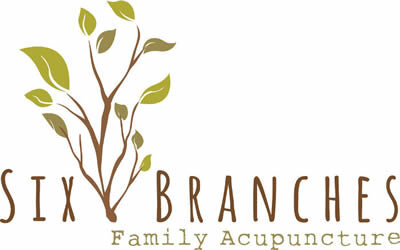Have you been told by your health practitioner that you or your child need to cut gluten out of your diet to address a health concern? Do you want to understand more about why cutting out gluten may help you deal with that health issue? In this post, we answer some common questions that patients ask about gluten sensitivity.
Read moreFiber facts
High-fiber diets are recommended for prevention of all kinds of health issues, including Type II Diabetes, metabolic syndrome, high cholesterol, heart disease, and colorectal cancers. We have been hearing about fiber for decades, but eating enough fiber is so important to our health that the basics bear reviewing.
There are essentially two kinds of fiber: water-soluble and water-insoluble.
Insoluble fiber is important for promoting bowel movements and maintaining bowel health. This is incredibly important, not just for comfort-sake (as anyone who has been constipated will tell you) but also because bowel movements are one of the main ways that our bodies excrete toxins from the body.
Soluble fiber has many important effects as well. It has been shown to:
lower blood cholesterol by lowering low-density lipoproteins (LDL - the cholesterol you want Less of).
control blood sugar by slowing the absorption of sugars. (This is why eating an apple won't spike your blood sugar levels as high as drinking apple juice, which has all the fiber removed.)
help with weight loss by providing bulk to a meal with less calories as well as requiring more chewing time for each bite, making it harder to over-eat.
Getting more fiber actually isn't that hard to do and just involves a few mindful choices at the grocery store and in your meal planning. Click here for tips on getting more fiber in your daily diet.
Easy Ways to Add More Fiber to your Diet
Fiber is an important part of our diet for many reasons. The American Dietetic Association recommends that adults eat 20-35 g of fiber a day. When you consider that one apple only has 3 grams of fiber, 35g may seem like an unreachable goal, but fear not, because it actually isn't as hard as it seems, and it doesn't require drinking your grandfather's gritty fiber supplement! These are a few guidelines to keep in mind when you're grocery shopping to help you increase your fiber intake:
Eat more beans and lentils, by far the highest source of fiber in our diet. Substitute beans for meat a few days a week.
Choose whole fruits instead of fruit juices.
Choose whole grains such as brown rice, quinoa, barley, and millet instead of processed breads, pasta, and couscous (which is really a pasta)
Choose high-fiber, whole grain breads such as whole wheat or European-style bread (this bread makes delicious toast)
Choose a high-fiber cereal such as Kashi Go Lean! Crunch, or Fiber-One.
Buy high fiber snacks such as carrots, snap peas, almonds, walnuts, and fruit
Eat your vegetables! There are many ways to make vegetables taste good. Check out this simple greens recipe from Debra Zambetti's blog, Savor Life.
To help you see how it's actually not that hard to eat 35 g of fiber in a day, I've compiled 2 sample days of fiber-containing foods. Even if you don't eat this way everyday, it's easy to throw an apple and some almonds in your bag to munch on at work instead of hitting the vending machine. Small changes in the choices you make can have big effects on your health.
Sample combinations for a day’s worth of fiber:
Breakfast: Kashi Go Lean Crunch cereal 9 g
(sprinkled with) 1 tsp ground flax seeds 2 g
1 serving Almond milk 1 g
Lunch: your choice of sandwich on
2 slices whole wheat bread 6 g
1 oz roasted almonds 3.3 g
1 medium apple 3.3 g
Dinner: 1 cup brown rice 3.5 g
1 serving lentil stew 6 g1
cup steamed broccoli 3 g
Total fiber = 37.1 g
____________________________________________
Breakfast: 1 Mestemacher sunflower bread 6 g
(toasted, with) 2 Tbsp almond butter 3 g
1 medium banana 3 g
Lunch: bean salad 1 cup (green/yellow/kidney) 6 g
Tabouli salad 1 cup 6 g
Dinner: 1 c brown rice 3.5 g
1/2 c black beans 7.5 g
1 medium tomato diced 1.5 g
1/4 avocado diced 2.5 g
Total fiber = 39 g
Of course, this may not be all you eat in a day, but here you can see that it actually isn't that hard to get a good amount of fiber on a daily basis.
[As a point of reference, here are a few common high fiber foods with their fiber content:
]Kidney beans 8.2 g per 1/2c
Lentils 7.8 g per 1/2c
Black beans 7.5 g per 1/2c
Sweet potato (medium) 4.8 g
Apple (medium) 3.3 g

